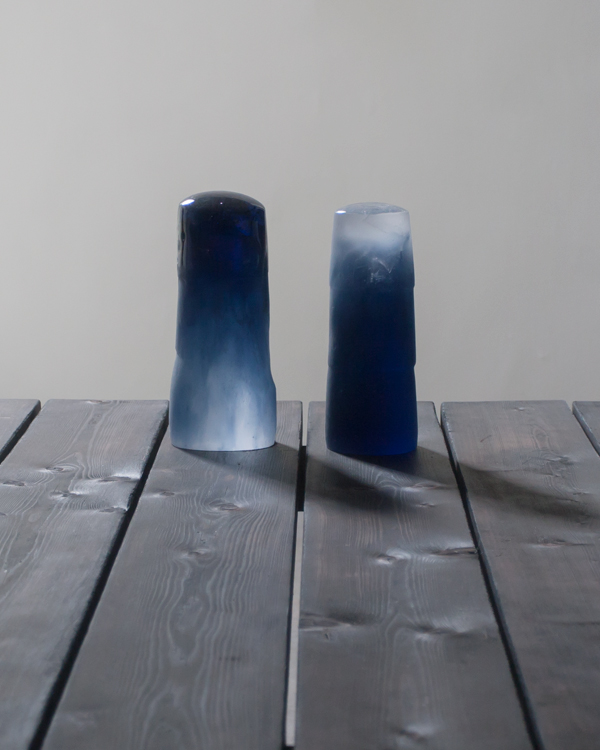Caoimhe Kilfeather
Douglas Hyde Gallery, Dublin, Ireland
Douglas Hyde Gallery, Dublin, Ireland

‘Simplicity,’ said Agnes Martin, ‘is never simple. It’s the hardest thing to achieve.’ She was speaking of the Zen quest for paring back, reducing things and ideas to the most perfect essence of themselves. ‘I’m not sure,’ she added, in a conversation with curator Michael Auping, ‘the West understands simplicity.’ I agree with her; though of any number of contemporary artists making spare works based on collections of lines or clusters of objects, Caoimhe Kilfeather understands better than most.
Aleana Egan gets it, too, and Amy Stephens; as does Eva Rothschild in her quieter moments. But Kilfeather has the guts to stretch simplicity to its most serene, almost to breaking point. In her solo exhibition, ‘This Attentive Place’, at Dublin’s Temple Bar Gallery, a highlight of 2014, she used loose panels of pale-blue oil-pigmented paper to imbue the gallery with a vague, lambent light. With ‘Season and Evening and Weather and History’ at Douglas Hyde Gallery, the framing paper hangings have gone, leaving her subtly crafted objects and black and white photographs to speak for themselves.

Shallow Rise (all works 2016) is a low slab of polished blue-tinted plaster. Put like that it doesn’t sound very exciting, except that the smooth surface looks like a high-resolution, close-up photograph of frozen water or a freeze-frame of choppy waves. Flat on the austere grey cement of the gallery floor, it almost becomes a kind of tombstone for the earth’s seas. Beside this, a small pile of dark, tempered-steel discs, Soft Notes, each probably less than a centimetre across, glitters gently.

A series of medium-scale framed photographs, arrayed at various points around the gallery, show misty hedges and a creeper-covered wall. These scenes both represent boundaries and an invitation to explore, perhaps to trespass. The hedges of In Life (II and IV) are shot at close quarters, creating dark winter-denuded thorny screens through which to wonder at what can’t quite be made out. All were taken either at dawn or dusk, in the formal gardens of the Irish Museum of Modern Art – an apt site for thoughts of exploration and intrusion.

Elsewhere in the exhibition, materials are made to reveal different qualities. The Time Between is a pair of carved coal pieces, polished until they shine like the diamonds they share a carbon structure with. The works are separated, one on the wall and the other on the floor on the other side of the gallery. Do they fit ‘back’ together as a pair? Something about Kilfeather’s installation and placement makes you think that they might. The title refers not only to the space-time between them, but also to the millennia it took to create the material, which in another context would be in a basket, ready to go up in a puff of smoke.
Kilfeather’s installation deals with time (in terms of aeons), materiality and the tenuous balance between the natural and the made: vast themes paradoxically expressed through minimal means. An earlier work, Quarter – a huge woven veneer structure shown at Oonagh Young Gallery in 2014 – commanded the space in a minimal yet massive intervention; here, she has achieved the same sense of dominance with smaller gestures. It seems that, with each body of work, Kilfeather gains confidence: to edit extraneous elements, reduce scale and, in the process, distill her ideas into their purest form – as with Zen. This exhibition brings that process a step closer.























